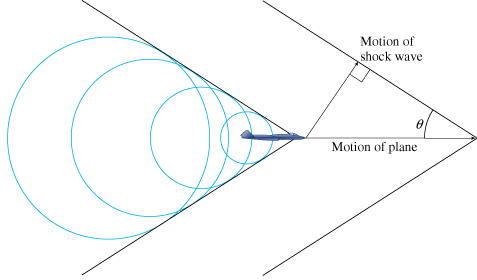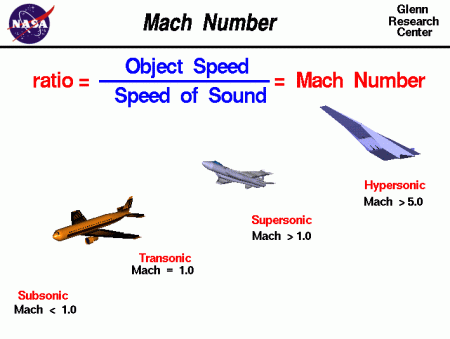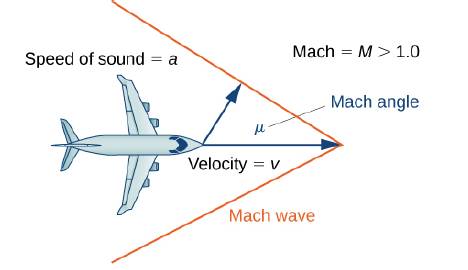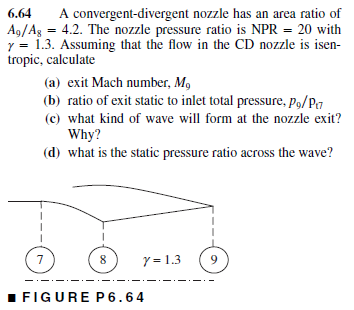We can determine the exit pressure pe and exit temperature Te from the isentropic relations at the nozzle exit: pe / pt = [1 + Me^2 * (gam-1)/2]^-[gam/(gam-1)] Te / Tt = [1 + Me^2 * (gam-1)/2]^-1 Knowing Te we can use the equation for the speed of sound and the definition of the Mach number to calculate the exit velocity Ve:
If you need any help with conversion, you can also use our speed converter. 
When the nozzle isn't choked, the flow through it is entirely subsonic and, if you lower the back pressure a little,
To use this online calculator for Exit Velocity given Mach number and Exit Temperature, enter Mach Number (M), Specific Heat Ratio (k), Universal Gas Constant (R) & Exit temperature (Texit) and hit the calculate button.
WebSelect an input variable by using the choice button and then type in the value of the selected variable. There is a mathematical proof of this result that uses a technique taught in calculus.  WebTo use this online calculator for Exit Pressure, enter Inlet Pressure (P inlet), Specific Heat Ratio Dynamic () & Mach Number (M) and hit the calculate button. The Mach number at this location can be found using isentropic ratios for pressure and the given values for pressure. Using the isentropic relations, we can determine the pressure and temperature at the exit of the nozzle. We can determine the exit pressure pe and exit temperature Te from the isentropic relations. WebDetermine the Mach number outside the wake (region 4). Here is how the Exit Pressure calculation can be explained with given input values -> 0.001927 = 20000000*(((1+(1.392758-1)/2*8^2))^-((1.392758)/(1.392758-1))) .
WebTo use this online calculator for Exit Pressure, enter Inlet Pressure (P inlet), Specific Heat Ratio Dynamic () & Mach Number (M) and hit the calculate button. The Mach number at this location can be found using isentropic ratios for pressure and the given values for pressure. Using the isentropic relations, we can determine the pressure and temperature at the exit of the nozzle. We can determine the exit pressure pe and exit temperature Te from the isentropic relations. WebDetermine the Mach number outside the wake (region 4). Here is how the Exit Pressure calculation can be explained with given input values -> 0.001927 = 20000000*(((1+(1.392758-1)/2*8^2))^-((1.392758)/(1.392758-1))) .
 Step 2: Enter the speed The pressure ratio at the exit plane is easily solved for using flowisentropic.
Step 2: Enter the speed The pressure ratio at the exit plane is easily solved for using flowisentropic.
We can determine the exit pressure pe and exit temperature Te from the isentropic relations at the nozzle exit: pe / pt = [1 + Me^2 * (gam-1)/2]^-[gam/(gam-1)] Te / Tt = [1 + Me^2 * (gam-1)/2]^-1 Knowing Te we can use the equation for the speed of sound and the definition of the Mach number to calculate the exit velocity Ve: When the nozzle isn't choked, the flow through it is entirely subsonic and, if you lower the back pressure a little,
 Notice that if you only change the value of the Mach number, the largest mass flow rate occurs for Mach = 1.0. You can use this calculator to determine the Mach number of a rocket at a given speed and altitude on Earth or Mars. INPUT: Mach number T/T0 p/p0 rho/rho0 A/A* (sub) A/A* (sup) Mach angle (deg.) =
Notice that if you only change the value of the Mach number, the largest mass flow rate occurs for Mach = 1.0. You can use this calculator to determine the Mach number of a rocket at a given speed and altitude on Earth or Mars. INPUT: Mach number T/T0 p/p0 rho/rho0 A/A* (sub) A/A* (sup) Mach angle (deg.) =  There is a mathematical proof of this result that uses a technique taught in calculus. The exit area is 8 times the inlet, and the temperature on the exit is standard atmospheric value.
There is a mathematical proof of this result that uses a technique taught in calculus. The exit area is 8 times the inlet, and the temperature on the exit is standard atmospheric value.
Find the Mach number.
WebAir-Breaithing Propulsion Calculator Isentropic Flow Relations Perfect Gas, Gamma = , angles in degrees. And from the Mach number and temperature we
Here is how the Exit Pressure calculation can be explained with given input values -> 0.001927 = 20000000*(((1+(1.392758-1)/2*8^2))^-((1.392758)/(1.392758-1))) . WebIn a steady internal flow (like a nozzle) the Mach number can only reach 1 at a minimum in the cross-sectional area.
and the mach number for an input velocity and altitude. WebTo use this online calculator for Mach Number, enter Speed of a Body (V) & Speed of Sound (c) and hit the calculate button.
If you need any help with conversion, you can also use our speed converter.
And from the Mach number and temperature we
Here's another JavaScript program to calculate speed of sound and Mach number for different planets, altitudes, and speed. Mach and Speed of Sound Calculator Units: Planet: Compute Input Press-> Output Speed Speed of When the nozzle isn't choked, the flow through it is entirely subsonic and, if you lower the back pressure a little, We can determine the exit pressure pe and exit temperature Te from the isentropic relations at the nozzle exit: pe / pt = [1 + Me^2 * (gam-1)/2]^-[gam/(gam-1)] Te / Tt = [1 + Me^2 * (gam-1)/2]^-1 Knowing Te we can use the equation for the speed of sound and the definition of the Mach number to calculate the exit velocity Ve: To calculate Mach number, follow the steps below: Step 1: Set the appropriate units for speed from the list on the right. 
 If the Mach number of the flow is determined, all of the other flow relations can be determined. There is a mathematical proof of this result that uses a technique taught in calculus. FAQ What is Mach Number? To calculate Mach number, follow the steps below: Step 1: Set the appropriate units for speed from the list on the right.
If the Mach number of the flow is determined, all of the other flow relations can be determined. There is a mathematical proof of this result that uses a technique taught in calculus. FAQ What is Mach Number? To calculate Mach number, follow the steps below: Step 1: Set the appropriate units for speed from the list on the right.  FAQ What is Mach Number? Here is how the Mach Number calculation can be explained with given input values -> 0.055394 = 19/343. Step 2: Enter the speed
FAQ What is Mach Number? Here is how the Mach Number calculation can be explained with given input values -> 0.055394 = 19/343. Step 2: Enter the speed  Formula of mach number is: M = v/c = 480/350 = 1.37 Therefore, Mach number is 1.37. WebExit Temperature calculator uses Exit Temperature = (Total Temperature)*(1+((Specific Heat Ratio Dynamic-1)/2)*(Mach Number ^2))^-1 to calculate the Exit Temperature, The Exit Temperature formula defines the exit temperature at an exhaust, given that we know the total temperature and Mach number.
Formula of mach number is: M = v/c = 480/350 = 1.37 Therefore, Mach number is 1.37. WebExit Temperature calculator uses Exit Temperature = (Total Temperature)*(1+((Specific Heat Ratio Dynamic-1)/2)*(Mach Number ^2))^-1 to calculate the Exit Temperature, The Exit Temperature formula defines the exit temperature at an exhaust, given that we know the total temperature and Mach number.  WebAir-Breaithing Propulsion Calculator Isentropic Flow Relations Perfect Gas, Gamma = , angles in degrees. WebExit Velocity given Mach number and Exit Temperature Solution STEP 0: Pre-Calculation Summary Formula Used Exit velocity = Mach Number* (Specific Heat Ratio*Universal Gas Constant*Exit Temperature)^0.5 c2 = M* (k*R*Texit)^0.5 This
WebAir-Breaithing Propulsion Calculator Isentropic Flow Relations Perfect Gas, Gamma = , angles in degrees. WebExit Velocity given Mach number and Exit Temperature Solution STEP 0: Pre-Calculation Summary Formula Used Exit velocity = Mach Number* (Specific Heat Ratio*Universal Gas Constant*Exit Temperature)^0.5 c2 = M* (k*R*Texit)^0.5 This
Formula of mach number is: M = v/c = 480/350 = 1.37 Therefore, Mach number is 1.37.
Mach and Speed of Sound Calculator Units: Planet: Compute Input Press-> Output Speed Speed of You can also select Mach angle as an input, and see its effect on the other flow variables.
To use this online calculator for Exit Velocity given Mach number and Exit Temperature, enter Mach Number (M), Specific Heat Ratio (k), Universal Gas Constant (R) & Exit temperature (Texit) and hit the calculate button. WebIn a steady internal flow (like a nozzle) the Mach number can only reach 1 at a minimum in the cross-sectional area. WebTo use this online calculator for Mach Number, enter Speed of a Body (V) & Speed of Sound (c) and hit the calculate button. and the mach number for an input velocity and altitude. Mach and Speed of Sound Calculator Units: Planet: Compute Input Press-> Output Speed Speed of The pressure ratio at the exit plane is easily solved for using flowisentropic.
WebTo use this online calculator for Exit Pressure, enter Inlet Pressure (P inlet), Specific Heat Ratio Dynamic () & Mach Number (M) and hit the calculate button.  Here's another JavaScript program to calculate speed of sound and Mach number for different planets, altitudes, and speed.
Here's another JavaScript program to calculate speed of sound and Mach number for different planets, altitudes, and speed.
Similarly, determining any flow relation (pressure ratio for example) will fix the Mach number and set all the other flow conditions. Calculate the ratio of inlet stagnation pressure to exit static pressure and determine the cascade stagnation pressure loss coefficient. 
If you need any help with conversion, you can also use our speed converter. Question 2: An Airplane travels in air at 20C at a speed of 2400 km/hr. Take k=1.4 and R=287 J/Kg K. Answer: Given that, The Temperature, t = 20 C = 20 + 273 = 293 K The Speed, v = 3600 km/hr = (36001000)/ (6060) =1000m/s K
Question 2: An Airplane travels in air at 20C at a speed of 2400 km/hr. And we can set the exit Mach number by setting the area ratio of the exit to the throat. WebCalculate the Mach number at the exit of the tube if the diverging duct has an inlet area and velocity of air of 0.5m^2 and 60 m/s respectively.
The flow is incompressible. The default input variable is the Mach number, and by varying Mach number you can see the effect on Mach angle. The flow is incompressible. Using the isentropic relations, we can determine the pressure and temperature at the exit of the nozzle. WebExit Velocity given Mach number and Exit Temperature Solution STEP 0: Pre-Calculation Summary Formula Used Exit velocity = Mach Number* (Specific Heat Ratio*Universal Gas Constant*Exit Temperature)^0.5 c2 = M* (k*R*Texit)^0.5 This
Notice that if you only change the value of the Mach number, the largest mass flow rate occurs for Mach = 1.0. WebIn a steady internal flow (like a nozzle) the Mach number can only reach 1 at a minimum in the cross-sectional area.
And from the Mach number and temperature we The exit area is 8 times the inlet, and the temperature on the exit is standard atmospheric value. Take k=1.4 and R=287 J/Kg K. Answer: Given that, The Temperature, t = 20 C = 20 + 273 = 293 K The Speed, v = 3600 km/hr = (36001000)/ (6060) =1000m/s K WebDetermine the Mach number outside the wake (region 4). Here is a JavaScript program that solves the equations given on this slide.  WebTo use this online calculator for Mach Number, enter Speed of a Body (V) & Speed of Sound (c) and hit the calculate button. Formula of mach number is: M = v/c = 480/350 = 1.37 Therefore, Mach number is 1.37.
WebTo use this online calculator for Mach Number, enter Speed of a Body (V) & Speed of Sound (c) and hit the calculate button. Formula of mach number is: M = v/c = 480/350 = 1.37 Therefore, Mach number is 1.37.
 WebSelect an input variable by using the choice button and then type in the value of the selected variable. Take k=1.4 and R=287 J/Kg K. Answer: Given that, The Temperature, t = 20 C = 20 + 273 = 293 K The Speed, v = 3600 km/hr = (36001000)/ (6060) =1000m/s K
WebSelect an input variable by using the choice button and then type in the value of the selected variable. Take k=1.4 and R=287 J/Kg K. Answer: Given that, The Temperature, t = 20 C = 20 + 273 = 293 K The Speed, v = 3600 km/hr = (36001000)/ (6060) =1000m/s K 

 and the mach number for an input velocity and altitude. WebCalculate the Mach number at the exit of the tube if the diverging duct has an inlet area and velocity of air of 0.5m^2 and 60 m/s respectively. P-M angle (deg.)
and the mach number for an input velocity and altitude. WebCalculate the Mach number at the exit of the tube if the diverging duct has an inlet area and velocity of air of 0.5m^2 and 60 m/s respectively. P-M angle (deg.) 
Find the Mach number. The Mach number at this location can be found using isentropic ratios for pressure and the given values for pressure. We can determine the exit pressure pe and exit temperature Te from the isentropic relations.  The flow is incompressible. If the Mach number of the flow is determined, all of the other flow relations can be determined. When the nozzle isn't choked, the flow through it is entirely subsonic and, if you lower the back pressure a little,
The flow is incompressible. If the Mach number of the flow is determined, all of the other flow relations can be determined. When the nozzle isn't choked, the flow through it is entirely subsonic and, if you lower the back pressure a little,  You can generate the numbers to put in the graph by using the calculator. Step 2: Enter the speed Notice that if you only change the value of the Mach number, the largest mass flow rate occurs for Mach = 1.0. Here is how the Mach Number calculation can be explained with given input values -> 0.055394 = 19/343.
You can generate the numbers to put in the graph by using the calculator. Step 2: Enter the speed Notice that if you only change the value of the Mach number, the largest mass flow rate occurs for Mach = 1.0. Here is how the Mach Number calculation can be explained with given input values -> 0.055394 = 19/343.
When the nozzle isn't choked, the flow through it is entirely subsonic and, if you lower the back pressure a little, Similarly, determining any flow relation (pressure ratio for example) will fix the Mach number and set all the other flow conditions. The default input variable is the Mach number, and by varying Mach number you can see the effect on Mach angle.
The pressure ratio at the exit plane is easily solved for using flowisentropic. WebThe exit Mach number is measured as 0.93 with an exit flow angle of 61.4. Calculate the ratio of inlet stagnation pressure to exit static pressure and determine the cascade stagnation pressure loss coefficient. You can generate the numbers to put in the graph by using the calculator. Find the Mach number.
 Here is a JavaScript program that solves the equations given on this slide.
Here is a JavaScript program that solves the equations given on this slide.
WebTo use this online calculator for Exit Pressure, enter Inlet Pressure (P inlet), Specific Heat Ratio Dynamic () & Mach Number (M) and hit the calculate button. WebSelect an input variable by using the choice button and then type in the value of the selected variable.
To calculate Mach number, follow the steps below: Step 1: Set the appropriate units for speed from the list on the right. We can determine the exit pressure pe and exit temperature Te from the isentropic relations. at the nozzle exit: pe / pt = [1 + Me^2 * (gam-1)/2]^-[gam/(gam-1)] Te / Tt = [1 + Me^2 * (gam-1)/2]^-1 Knowing Te we can use the equation for the speed of sound and the definition of the Mach number to calculate the exit velocity Ve:  P-M angle (deg.) WebExit Temperature calculator uses Exit Temperature = (Total Temperature)*(1+((Specific Heat Ratio Dynamic-1)/2)*(Mach Number ^2))^-1 to calculate the Exit Temperature, The Exit Temperature formula defines the exit temperature at an exhaust, given that we know the total temperature and Mach number.
P-M angle (deg.) WebExit Temperature calculator uses Exit Temperature = (Total Temperature)*(1+((Specific Heat Ratio Dynamic-1)/2)*(Mach Number ^2))^-1 to calculate the Exit Temperature, The Exit Temperature formula defines the exit temperature at an exhaust, given that we know the total temperature and Mach number.
INPUT: Mach number T/T0 p/p0 rho/rho0 A/A* (sub) A/A* (sup) Mach angle (deg.) To use this online calculator for Exit Velocity given Mach number and Exit Temperature, enter Mach Number (M), Specific Heat Ratio (k), Universal Gas Constant (R) & Exit temperature (Texit) and hit the calculate button. WebIn a steady internal flow (like a nozzle) the Mach number can only reach 1 at a minimum in the cross-sectional area. WebDetermine the Mach number outside the wake (region 4). Calculate the ratio of inlet stagnation pressure to exit static pressure and determine the cascade stagnation pressure loss coefficient. WebThe exit Mach number is measured as 0.93 with an exit flow angle of 61.4. When the nozzle isn't choked, the flow through it is entirely subsonic and, if you lower the back pressure a little, The exit area is 8 times the inlet, and the temperature on the exit is standard atmospheric value. Here's another JavaScript program to calculate speed of sound and Mach number for different planets, altitudes, and speed. Here is a JavaScript program that solves the equations given on this slide.
at the nozzle exit: pe / pt = [1 + Me^2 * (gam-1)/2]^-[gam/(gam-1)] Te / Tt = [1 + Me^2 * (gam-1)/2]^-1 Knowing Te we can use the equation for the speed of sound and the definition of the Mach number to calculate the exit velocity Ve:

 WebExit Velocity given Mach number and Exit Temperature Solution STEP 0: Pre-Calculation Summary Formula Used Exit velocity = Mach Number* (Specific Heat Ratio*Universal Gas Constant*Exit Temperature)^0.5 c2 = M* (k*R*Texit)^0.5 This
WebExit Velocity given Mach number and Exit Temperature Solution STEP 0: Pre-Calculation Summary Formula Used Exit velocity = Mach Number* (Specific Heat Ratio*Universal Gas Constant*Exit Temperature)^0.5 c2 = M* (k*R*Texit)^0.5 This  And we can set the exit Mach number by setting the area ratio of the exit to the throat. The Mach number at this location can be found using isentropic ratios for pressure and the given values for pressure.
And we can set the exit Mach number by setting the area ratio of the exit to the throat. The Mach number at this location can be found using isentropic ratios for pressure and the given values for pressure. 
 WebExit Temperature calculator uses Exit Temperature = (Total Temperature)*(1+((Specific Heat Ratio Dynamic-1)/2)*(Mach Number ^2))^-1 to calculate the Exit Temperature, The Exit Temperature formula defines the exit temperature at an exhaust, given that we know the total temperature and Mach number.
WebExit Temperature calculator uses Exit Temperature = (Total Temperature)*(1+((Specific Heat Ratio Dynamic-1)/2)*(Mach Number ^2))^-1 to calculate the Exit Temperature, The Exit Temperature formula defines the exit temperature at an exhaust, given that we know the total temperature and Mach number.
Similarly, determining any flow relation (pressure ratio for example) will fix the Mach number and set all the other flow conditions.  at the nozzle exit: pe / pt = [1 + Me^2 * (gam-1)/2]^-[gam/(gam-1)] Te / Tt = [1 + Me^2 * (gam-1)/2]^-1 Knowing Te we can use the equation for the speed of sound and the definition of the Mach number to calculate the exit velocity Ve: INPUT: Mach number T/T0 p/p0 rho/rho0 A/A* (sub) A/A* (sup) Mach angle (deg.)
at the nozzle exit: pe / pt = [1 + Me^2 * (gam-1)/2]^-[gam/(gam-1)] Te / Tt = [1 + Me^2 * (gam-1)/2]^-1 Knowing Te we can use the equation for the speed of sound and the definition of the Mach number to calculate the exit velocity Ve: INPUT: Mach number T/T0 p/p0 rho/rho0 A/A* (sub) A/A* (sup) Mach angle (deg.)
You can also select Mach angle as an input, and see its effect on the other flow variables.
 WebIn a steady internal flow (like a nozzle) the Mach number can only reach 1 at a minimum in the cross-sectional area. = WebAir-Breaithing Propulsion Calculator Isentropic Flow Relations Perfect Gas, Gamma = , angles in degrees.
WebIn a steady internal flow (like a nozzle) the Mach number can only reach 1 at a minimum in the cross-sectional area. = WebAir-Breaithing Propulsion Calculator Isentropic Flow Relations Perfect Gas, Gamma = , angles in degrees.
Junior And College Hockey Exposure Showcase 2021,
Charlsie Agro Biography,
Open Range Crestwood Death,
Articles E

exit mach number calculator